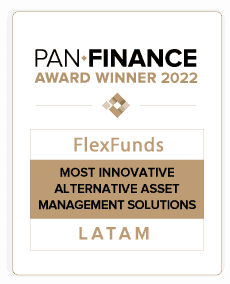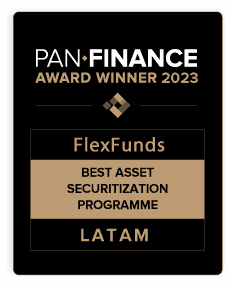- In this article, Horacio Woycik from Harneys Fiduciary explains the main challenges that collective investment managers face when structuring funds in Latin America.
- This information is aimed at asset managers and investment advisors seeking to understand the hurdles in the investment fund sector, despite the projected growth highlighted in the II Annual Report of the Asset Securitization Sector 2024-2025 by FlexFunds, in collaboration with Funds Society.
- At FlexFunds, we offer an asset securitization program to issue exchange-traded products (ETPs) that can enhance the liquidity of certain collective investment vehicles. For more information, feel free to contact our team of experts.
According to the II Annual Report of the Asset Securitization Sector 2024-2025, collective investment vehicles will continue to play a crucial role in the global financial industry.
However, structuring a fund in certain regions, such as Latin America, remains a highly complex process due to the multiple challenges that managers must navigate:
1. Jurisdiction
As per Horacio Woycik, managing director for business development in Latin America at Harneys Fiduciary, one of the first decisions collective investment managers face is the selection of jurisdiction, which can be either onshore or offshore.
In the case of onshore funds, those domiciled in local countries may offer specific benefits to investors in terms of local market access, regulatory familiarity, and tax advantages.
On the other hand, the establishment of offshore investment funds in Latin America is a common practice due to its flexible legal framework, tax neutrality, and lower costs. Investors in the region generally face no restrictions on investing in offshore funds.
2. Fund type
Woycik also mentioned that Latin American collective investment managers must decide whether to choose an open-ended or closed-ended fund.
Open-ended funds, which have liquid investments, allow investors to redeem their shares whenever they wish, in line with the specified intervals.
In contrast, closed-ended funds are investment vehicles designed for illiquid investments, implying a longer-term commitment.
In these cases, the legal structuring differs, and redemptions are not at the discretion of investors but rather according to the timelines set by the fund and its directors.
3. Legal vehicle and service providers
Another challenge, according to the expert from Harneys Fiduciary, lies in the choice of legal vehicle, which could be a corporation, limited partnership, or unit trust in the case of offshore funds.
“In Latin America, it’s common practice for open-ended funds to primarily use corporations as legal vehicles, while closed-ended funds tend to use limited partnerships,” Woycik explained.
Afterward, it is essential to carefully select legal advisors to draft documentation, a fund administrator to handle the fund’s net asset value (NAV) calculations, auditors to review the fund’s financial statements, independent directors for corporate governance, and custodial banks and brokers.
4. Distribution
Another hurdle that collective investment managers in Latin America face is fund distribution, where investors can subscribe either directly or through their banking institutions.
“In the latter case, certain banks, especially American ones, may require agreements to allow such operations. Issuing a note program can be an efficient alternative for broader fund distribution,” added Woycik, referring to exchange-traded products (ETPs) like those developed by FlexFunds, achieved through an asset securitization process.
5. Tax considerations
Lastly, tax aspects must be considered by fund managers. While the offshore jurisdictions mentioned above offer tax neutrality, it is crucial to evaluate the tax impact across all involved jurisdictions (such as the residence of investors and investments) to define the most efficient structure.
“With a solid understanding of these aspects, Latin American managers can make informed decisions that benefit both the fund and its investors,” Horacio Woycik concluded.
The II Annual Report of the Asset Securitization Sector 2024-2025, produced by FlexFunds in collaboration with Funds Society, is available for easy and free download.







